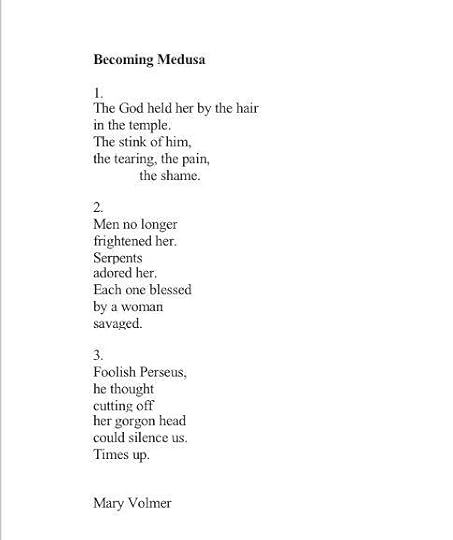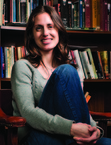Mary Volmer's Blog, page 2
September 28, 2018
April 28, 2018
Chekhov's Law
My Performance Poem in Bullets Into Bells
Chekhov's Law
By Mary Volmer
A performance poem for three actors. 1, 2, and 3 stand in a row, each holding behind her back a small scroll filled with names of people killed by gun violence. Very little movement except in their faces and voices, and in the eventual unfurling of the scrolls. The stage is bare. Red tinged lighting or background with yellow accents to suggest police tape. Experiment with the way the lines overlap and with cadence. Experiment with stage directions. Change the set.
(1) The gun
(3) in act one
(1,2) The gun in act one
(3) The gun in act one
(1,2) must go off.
(1) The shock?
(3, 2) Our surprise.
(2) The crowd gasps aloud
(3 overlaps line above) Hear the crowd
(1) gasp aloud
(1,2,3 crescendo) when the gun in act one
(2) each word a whispered beat) Goes. Off.
(1)Then the dead too soon
(2,3 overlap) Watch the
(1) too soon dead
(1,2,3 speak in a round, last word heard: “saints,” is a hiss) become newsreel saints:
(1 stoic, newsreader face) perfect mothers,
(2 newsreader face) loving fathers;
(1 newsreader face) such promise the sons and daughters
(3 joins the line above after “promise,”) My son! (gasp) My daughter!
(2 Lets scroll fall without comment on the stage; names spill out.)
(2) And the killer?
(3) The killer, crazy, yes. (Lets the scroll fall)
(1 quiet, subdued, puzzled) Still, we never expect (Lets scroll fall)
(2 overlap expect) still never
(1,2,3) we never expect
(3) on this stage
(1,3) we set
(2) that the gun in act one will go off.
(Gunshot on “off,” stage lights out, actors cast their scrolls into the audience. If there is a projector, the names scroll down a lit screen).
https://bulletsintobells.com/2018/04/24/chekhovs-law/
Chekhov's Law
By Mary Volmer
A performance poem for three actors. 1, 2, and 3 stand in a row, each holding behind her back a small scroll filled with names of people killed by gun violence. Very little movement except in their faces and voices, and in the eventual unfurling of the scrolls. The stage is bare. Red tinged lighting or background with yellow accents to suggest police tape. Experiment with the way the lines overlap and with cadence. Experiment with stage directions. Change the set.
(1) The gun
(3) in act one
(1,2) The gun in act one
(3) The gun in act one
(1,2) must go off.
(1) The shock?
(3, 2) Our surprise.
(2) The crowd gasps aloud
(3 overlaps line above) Hear the crowd
(1) gasp aloud
(1,2,3 crescendo) when the gun in act one
(2) each word a whispered beat) Goes. Off.
(1)Then the dead too soon
(2,3 overlap) Watch the
(1) too soon dead
(1,2,3 speak in a round, last word heard: “saints,” is a hiss) become newsreel saints:
(1 stoic, newsreader face) perfect mothers,
(2 newsreader face) loving fathers;
(1 newsreader face) such promise the sons and daughters
(3 joins the line above after “promise,”) My son! (gasp) My daughter!
(2 Lets scroll fall without comment on the stage; names spill out.)
(2) And the killer?
(3) The killer, crazy, yes. (Lets the scroll fall)
(1 quiet, subdued, puzzled) Still, we never expect (Lets scroll fall)
(2 overlap expect) still never
(1,2,3) we never expect
(3) on this stage
(1,3) we set
(2) that the gun in act one will go off.
(Gunshot on “off,” stage lights out, actors cast their scrolls into the audience. If there is a projector, the names scroll down a lit screen).
https://bulletsintobells.com/2018/04/24/chekhovs-law/
Published on April 28, 2018 14:36
April 12, 2018
Serious Play:The Craft of Fiction and the Importance of Storytelling
Authors Sarah Ladipo Manyika and Nayomi Munaweera in conversation with Mary Volmer about the craft of fiction and the global importance of storytelling
Saturday, April 21st, 3:00 pm
Hagerty Lounge, De La Salle Hall
Saint Mary’s College, 1928 Saint Mary’s Road, Moraga, CA 94575
The Women’s National Book Association, San Francisco Chapter, presents an afternoon conversation with internationally acclaimed authors Sarah Ladipo Manyika and Nayomi Munaweera. Come to hear these two remarkable women discuss the craft of fiction, the global importance of storytelling, and their impressive philanthropic endeavors. Reception to follow.
Sponsored by the Saint Mary’s College of California MFA in Creative Writing. Co-sponsored by the Saint Mary’s English Department, the Intercultural Center, and the Women’s Resource Center.
$15.00 WNBA members, $20.00 non-members (Prepay online, or at the door)
FREE for SMC students with a valid student ID
All proceeds benefit the WNBA-SF and the Saint Mary’s College MFA’s Hedgebrook Scholarship.
To sign up:
http://wnba-sfchapter.org/serious-pla...
Saturday, April 21st, 3:00 pm
Hagerty Lounge, De La Salle Hall
Saint Mary’s College, 1928 Saint Mary’s Road, Moraga, CA 94575
The Women’s National Book Association, San Francisco Chapter, presents an afternoon conversation with internationally acclaimed authors Sarah Ladipo Manyika and Nayomi Munaweera. Come to hear these two remarkable women discuss the craft of fiction, the global importance of storytelling, and their impressive philanthropic endeavors. Reception to follow.
Sponsored by the Saint Mary’s College of California MFA in Creative Writing. Co-sponsored by the Saint Mary’s English Department, the Intercultural Center, and the Women’s Resource Center.
$15.00 WNBA members, $20.00 non-members (Prepay online, or at the door)
FREE for SMC students with a valid student ID
All proceeds benefit the WNBA-SF and the Saint Mary’s College MFA’s Hedgebrook Scholarship.
To sign up:
http://wnba-sfchapter.org/serious-pla...
Published on April 12, 2018 17:14
February 5, 2018
My Not Quite Banned Book
In 2010 my first novel, Crown of Dust, was among several books under consideration for a county reads program. It was dismissed after a small, vocal group of parents decided the content inappropriate. Had they read the book? Well, no. But they’d heard it was set in brothel, and the tagline provided by my publisher – “A gender bending story of love, friendship and redemption” – no doubt put them off.
It is true that the main character of the book is young woman who disguises herself as a man. And money is exchanged for sex. But if you’re hoping for a bodice buster, you’re out of luck. Crown of Dust is a coming of age story about identity, redemption, betrayal, and friendship. It features strong women surviving as best they can in a ramshackle settlement of men. Sexuality is part of the story, but not the story. (And really, if those parents wanted to strip the county of sexual references they might have started by repainting the walls of the high school girls locker room.)
Set in California during the Gold Rush, my novel dramatizes the ways in which people on the western frontier established their own conventions of behavior suitable to their circumstances. It reveals that human love has never been restricted by gender and that, for better or worse, sex has always been a commodity, a source of female power and vulnerability. I write about these things because they are true, and not even particularly revelatory. I honor the presence and stories of strong women, gay men, and black men in a place and time from which they had been excised. There are a great many more stories yet to tell.
History is messy and more complex (and entertaining) than the tidy textbook myths we create to contain it. Crown of Dust revels in the mess and complexity, and for that reason suffered a fate far more common than a ban: quiet dismissal by a small minority of people who prefer their history sterilized, processed and vetted to resemble their own biases.
First appeared in Diana Tierney's Creating Herstory : Celebrating Women Who Create History
Published on February 05, 2018 12:14
My Not Banned Book
In 2010 my first novel, Crown of Dust, was among several books under consideration for a county reads program. It was dismissed after a small, vocal group of parents decided the content inappropriate. Had they read the book? Well, no. But they’d heard it was set in brothel, and the tagline provided by my publisher – “A gender bending story of love, friendship and redemption” – no doubt put them off.
It is true that the main character of the book is young woman who disguises herself as a man. And money is exchanged for sex. But if you’re hoping for a bodice buster, you’re out of luck. Crown of Dust is a coming of age story about identity, redemption, betrayal, and friendship. It features strong women surviving as best they can in a ramshackle settlement of men. Sexuality is part of the story, but not the story. (And really, if those parents wanted to strip the county of sexual references they might have started by repainting the walls of the high school girls locker room.)
Read the rest on Diana Tierney's Creating Herstory : Celebrating Women Who Create History
Published on February 05, 2018 12:14
January 8, 2018
24th Festival of Women Authors - February 3rd
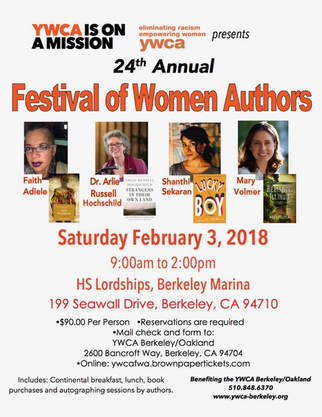 Join Faith Adiele, Dr. Arlie Russell Hochschild, Shanthi Sekaran, and I at the Festival of Women Authors! Tickets are going fast. Hope to see you there!
Join Faith Adiele, Dr. Arlie Russell Hochschild, Shanthi Sekaran, and I at the Festival of Women Authors! Tickets are going fast. Hope to see you there!Faith Adiele
Faith is the author of two memoirs, The Nigerian Nordic Girl’s Guide to Lady Problems , an audio and e-book about black women and fibroids, and Meeting Faith , an account of becoming the first Black Buddhist nun of Thailand, which won a PEN Open Book Award. She is writer/narrator/subject of the PBS documentary, My Journey Home , about being raised by a Nordic-American single mother and finding her Nigerian father and siblings as an adult, and co-editor of Coming of Age Around the World: A Multicultural Anthology . Her essays on multiracial identity, family, food, travel, spirituality and the writing craft have appeared in such publications as O: The Oprah Magazine, The Huffington Post, Yes!, Essence Magazine, and numerous anthologies. Named as one of Marie Claire Magazine’s “Five Women to Learn From,” Adiele is Associate Professor in Creative Nonfiction at California College of the Arts, and teaches popular workshops at Esalen, Vortex/Hedgebrook, The San Francisco Writers’ Grotto and VONA/Voices, where she founded the nation’s first travel writing workshop for people of color. She lives in Oakland, where she runs a community African Book Club. www.adiele.com, @meetingfaith.
Dr. Arlie Russell Hochschild
Dr. Russell Hochschild is one of the most influential sociologists of her generation. Her latest book, Strangers in Their Own Land, was a New York Times bestseller and a finalist for the National Book Award. She is the author of several books, including The Second Shift, The Time Bind, The Managed Heart, and The Outsourced Self. Her work appears in sixteen languages. The winner of the Ulysses Medal as well as Guggenheim and Mellon grants, she lives in Berkeley, California.
Shanthi Sekaran
Shanthi Sekaran is the author of Lucky Boy and The Prayer Room . She teaches creative writing and is a member of the Portuguese Artists’ Colony and the San Francisco Writers’ Grotto. Her work has appeared in the New York Times, Best New American Voices and Canteen, and online at Zyzzyva and Mutha Magazine. A California native, she lives in Berkeley with her husband and two children.
Mary Volmer
Mary Volmer is the author of two novels: Crown of Dust (Soho Press, 2010) and Reliance, Illinois (Soho Press, 2016). Her short fiction and essays have appeared in various publications, including Mutha Magazine, Women’s Basketball Magazine, Fiction Writers Review, Historical Novel Society Review, Brevity, and Ploughshares. She has been awarded residencies at the Vermont Studio Center and Hedgebrook and was the spring 2015 Distinguished Visiting Writer in Residence at Saint Mary’s College (CA) where she now teaches. www.maryvolmer.com
Published on January 08, 2018 11:12
December 31, 2017
So, You Want To Write A Novel? A Master Class
So, You Want To Write A Novel?
Lakeshore Writers Workshops - Oakland, CA
Master Class with novelist Mary Volmer
Author of Crown of Dust and Reliance, Illinois
January 14, 2018 – 9:00- 2:30
Are you working on a novel but lost traction? Do you have a first draft but are not sure what's next? Having trouble knowing where to begin?
In this one day intensive workshop, you will learn how to clarify your artistic intent and to refine (and in some cases define) the unique dramatic structure of your story. You will learn how to manage and incorporate research, historical and otherwise. You will leave with a clearer notion of how to attack the writing and/or revision process.
Come prepared to work! Bring a notebook and something to write with. If you have a draft, bring it along.
Contact workshop director Teresa Burn Gunther for cost and details: teresa@lakeshorewriters.net
https://www.lakeshorewriters.net/prev...
Lakeshore Writers Workshops - Oakland, CA
Master Class with novelist Mary Volmer
Author of Crown of Dust and Reliance, Illinois
January 14, 2018 – 9:00- 2:30
Are you working on a novel but lost traction? Do you have a first draft but are not sure what's next? Having trouble knowing where to begin?
In this one day intensive workshop, you will learn how to clarify your artistic intent and to refine (and in some cases define) the unique dramatic structure of your story. You will learn how to manage and incorporate research, historical and otherwise. You will leave with a clearer notion of how to attack the writing and/or revision process.
Come prepared to work! Bring a notebook and something to write with. If you have a draft, bring it along.
Contact workshop director Teresa Burn Gunther for cost and details: teresa@lakeshorewriters.net
https://www.lakeshorewriters.net/prev...
Published on December 31, 2017 07:19
December 27, 2017
Santa Tracker
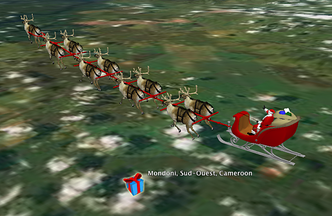 On Christmas Eve, my son and I watched online as Santa began his annual circumnavigation, following the sun, east to west. I too believed in Santa, innocently, for time, then willfully for years after. Santa lived for me in myth and stories to which I joyfully surrendered my imagination and set my desires. When I finally conceded – years after the doubt set in - that Santa was a “poetic truth” of a season, and did not belong on the growing list of verifiable facts complicating my life, I was okay. I didn’t suffer undo disillusionment, only an early onset nostalgia, a desire to un-know, to return to state of perfect – which is to say, unquestioned - faith.
On Christmas Eve, my son and I watched online as Santa began his annual circumnavigation, following the sun, east to west. I too believed in Santa, innocently, for time, then willfully for years after. Santa lived for me in myth and stories to which I joyfully surrendered my imagination and set my desires. When I finally conceded – years after the doubt set in - that Santa was a “poetic truth” of a season, and did not belong on the growing list of verifiable facts complicating my life, I was okay. I didn’t suffer undo disillusionment, only an early onset nostalgia, a desire to un-know, to return to state of perfect – which is to say, unquestioned - faith.I grew up, unlike my son, at time and in a family, where fact and faith both held truths that were easily differentiated. Fact you could record, measure, prove. Faith was a truth one felt, based in story, in myth, and flexible enough grow with fact. What fascinates me, now, as I scribble these words, is how profoundly the internet age has blurred the divide between fact, faith and myth. My son has not merely grown up hearing stories of Saint Nick, he has been shown minute by minute, video evidence of his progress, provided by the US Airforce. Fake facts. “Factual” falsehood, offered with the best of intentions, of course, as way to cement faith, to lend credence to myth.
But I wonder if such “evidence” is part and parcel to the crisis we now face in internet age. We present as “fact” and provide “evidence” for that which should remain story-based a myth. At the same time we compulsively question “facts” - such as climate change, or life-saving vaccines - as though painstaking and overwhelming scientific evidence is no more than myth. How do we come to know anything, now?
Descartes would say that only our capacity to think is evidence of our own existence. How he leaps from this rational conception to the existence of God is a fodder for another, longer post. But his method, rooted in skepticism (even as he tries to denounce the skeptics), mirrors the fundamental question of our age. How do we live together when everything beyond the self, even fact, is subject to doubt? How do we avoid falling prey to the corrosive brand of opportunistic denial practiced by the current president and his constituents? How do we differentiated fact, with so many convenient fictions masquerading as fact available on the internet? This is the existential question not so quietly consuming us.
But, perhaps this will not be a crisis for my son as it is for me? Perhaps his mind will adapt to differentiate truth from fiction with more discernment than those of us trapped between paradigms. Is such a thought optimism or avoidance? I don’t know. For now, I put the question away, return the Santa Tracker, Christmas cookies, presents under the tree, one small family in an ever shifting universe.
Published on December 27, 2017 09:46
October 14, 2017
Writing as Laborious Play
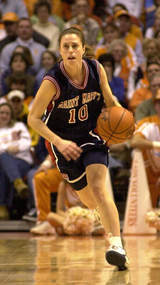 In "Writing as Laborious Play," I explore the traits athletes and writers share in common. Here's a taste:
In "Writing as Laborious Play," I explore the traits athletes and writers share in common. Here's a taste:The obsessions of writers and athletes begin the same way, as play. In his memoir, Hoop Roots, John Edgar Wideman explains that his basketball obsession began, “as messing around…throw a ball through a hoop, a fun silly kind of trick at first, until you decide you want to do it better.” He might as well have been speaking about storytelling and writing.
Click here to read the rest in Brevity .
Published on October 14, 2017 15:44
July 15, 2017
Review of LIVING IN THE WEATHER OF THE WORLD by Richard Bausch
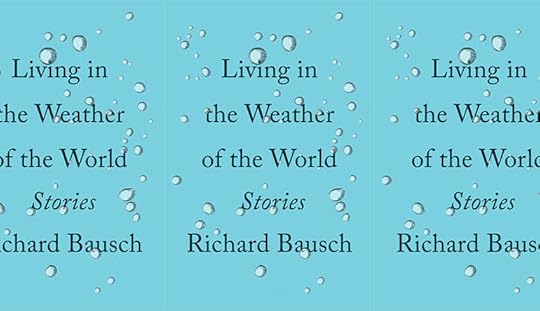 “Instead of a loose web spread over a surface of a life,” says Edith Wharton, the short story is, “at its best, a shaft driven straight into the heart of human experience.” Few living writers are more adept at capturing those experiences than Richard Bausch...
“Instead of a loose web spread over a surface of a life,” says Edith Wharton, the short story is, “at its best, a shaft driven straight into the heart of human experience.” Few living writers are more adept at capturing those experiences than Richard Bausch...Read the rest of my review of Richard Bausch's LIVING IN THE WEATHER OF THE WORLD in Ploughshares.
Published on July 15, 2017 01:32

